This recipe for Rhubarb Cream Pie, handwritten in pencil, brought back a flood of precious memories from more than forty years ago.
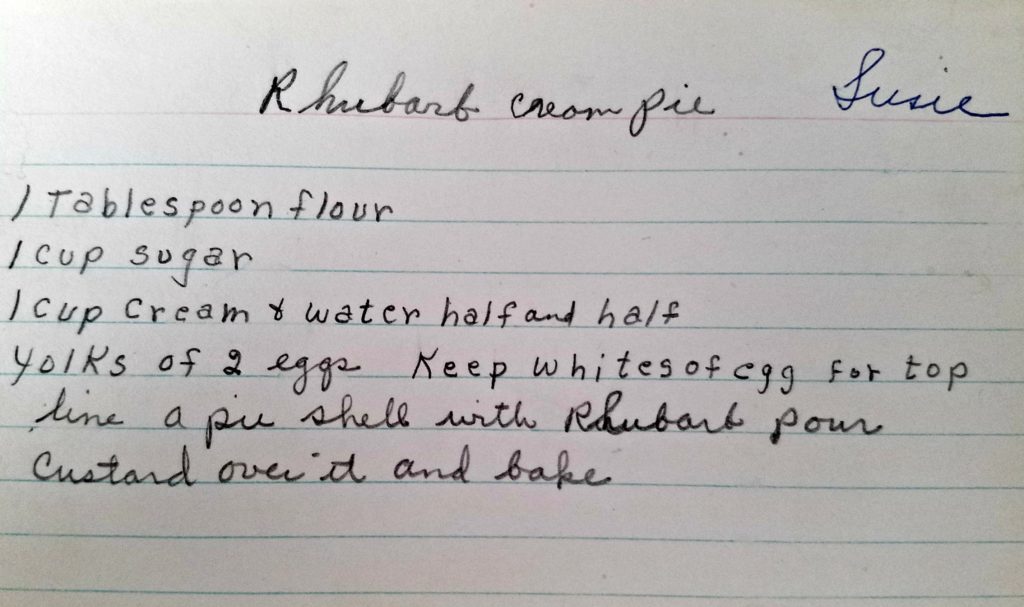
When our two boys were very young, I was one of the luckiest working moms in America. I was able to walk several blocks to work as the receptionist in a doctor’s office and leave our boys at home with a wonderful Amish woman who became a near and dear family friend.
Katie was a joy to be around, and she took such good care of our little boys. And besides caring for our children, she also cleaned our house and had dinner ready for our family when I returned from work! (Like I said…the luckiest working mom in America!)
Because Katie was Amish, she didn’t drive a car, and it would have been unfair to ask her to hitch up her horse and drive to town to stay with our children, so we drove out to her farm to pick her up each morning and we took her back to her farm after work. Katie and her sister Susie lived in a small house that was built on the farm owned by her brother. Neither woman ever married, and both of them made their living by cleaning homes and caring for the children of other “English” as non-Amish people are called.
In later years, Katie gave up house cleaning and nanny positions and she took a job at a local hardware store where she still works today. I still consider both Katie and her sister Susie to be a part of our family…and when I ran across this recipe card I just knew I would have to make this pie.
The handwritten Rhubarb Cream Pie recipe card from Susie gave very brief directions that were confusing to me…but I looked at several other recipes online and I think I figured out the details Susie omitted since she assumed every baker would already know how long to bake the pie, and at what temperature. (Amish woman learn their way around the kitchen at a very early age!) Susie’s directions to “keep the egg whites for the top” made me realize I was also supposed to make a meringue, so I refreshed my meringue-making skills by reading those directions in another recipe. I assumed I was to bake the pie and add the meringue at the last minute and bake again, just long enough to brown the topping. (I felt like a mad scientist as I devised my own plan to recreate this pie.)
Rhubarb is actually a vegetable, but most people think of it as fruit since it is used in so many desserts. It’s a very common plant growing on almost every Iowa farm…even today. I often wonder who was the first person to harvest and eat rhubarb…and if that person lived to tell about it. It’s a strange plant since the stalks are edible and delicious but the leaves are poisonous, containing corrosive oxalic acid!
This spring my dear brother dug up four big rhubarb clumps from our family farm and he transplanted them into our back yard. It means so much to me since these rhubarb plants are growing from the same roots my grandmother and my mom harvested…and those roots are more than one hundred years old!
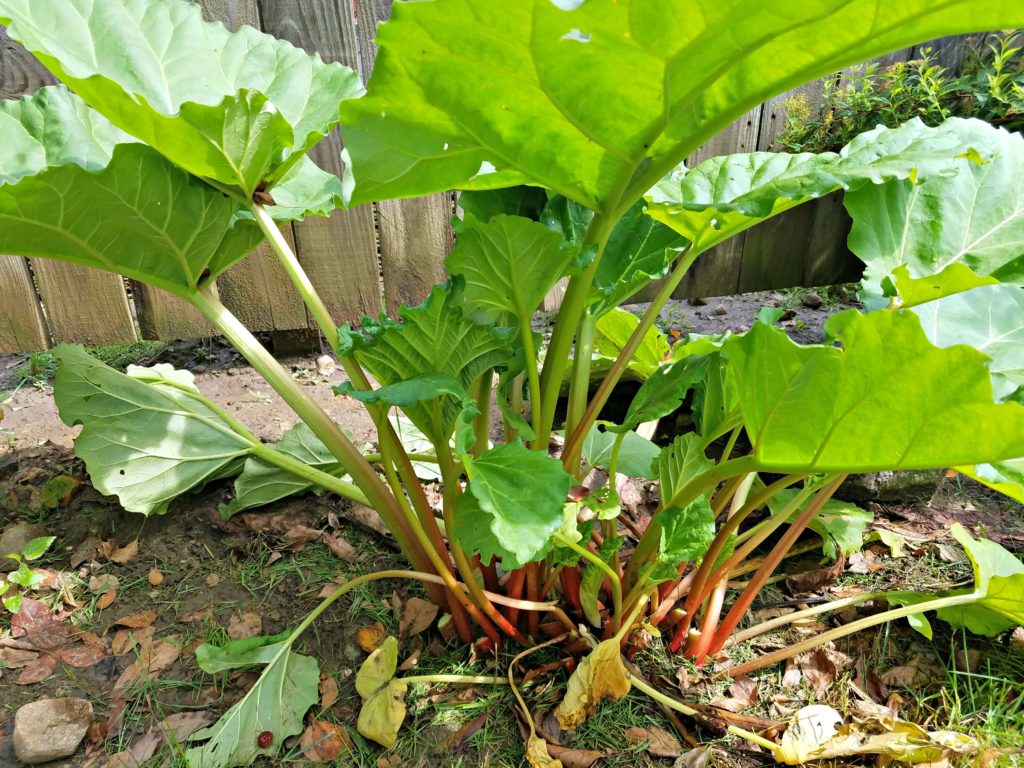
Even though I should have waited a full year before using any of the stalks in order to let the roots become stronger after being transplanted, I harvested enough from one of the plants to make this pie. (We’re having company and I know they will appreciate a taste they will remember from their childhoods too.)
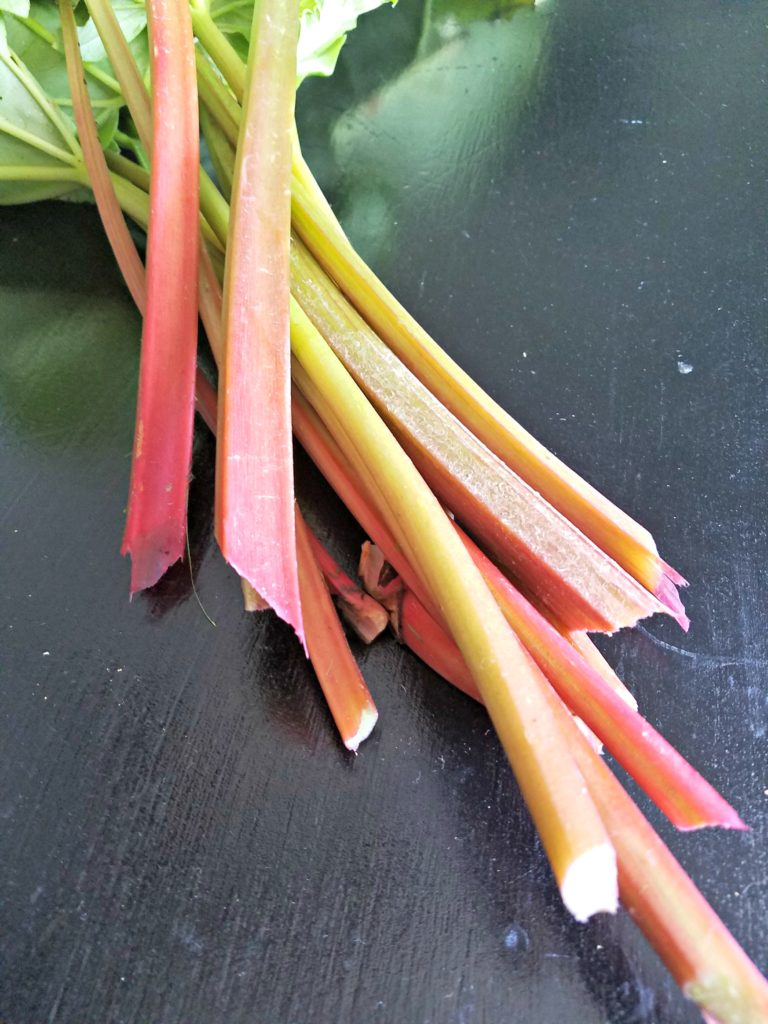
The ingredients in this pie are so very simple…ingredients almost everyone has in their pantry.
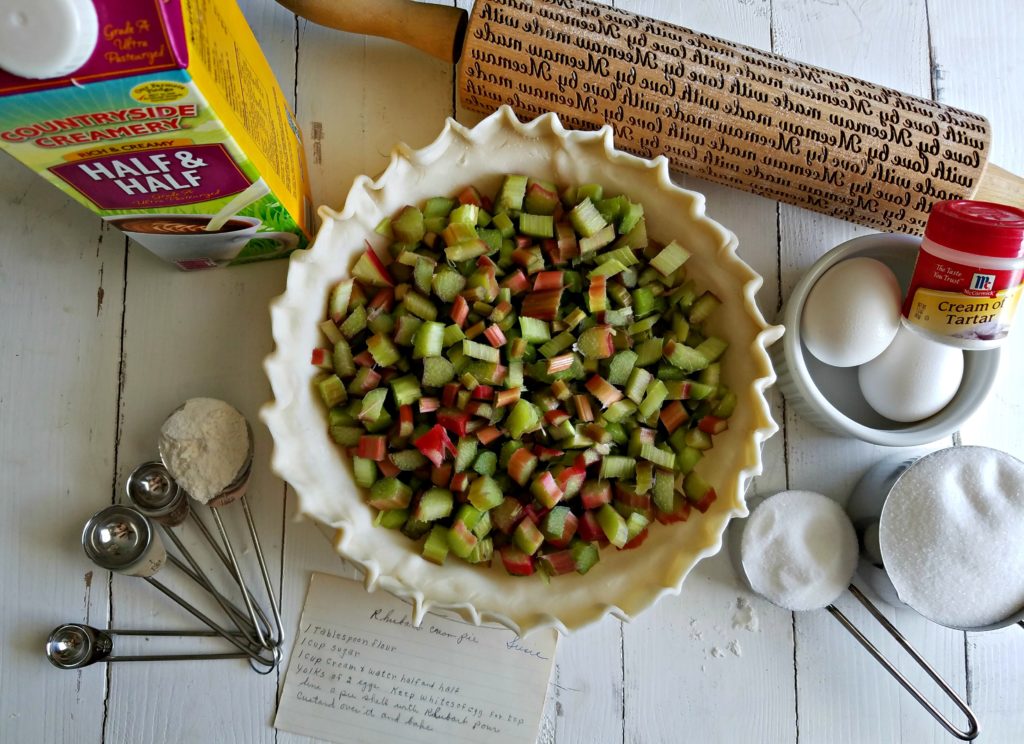
You don’t even need a mixer for this one…I used a whisk to mix the ingredients. (Amish people don’t used electricity, so I’m quite sure Susie or Katie used a whisk or a spoon too.)
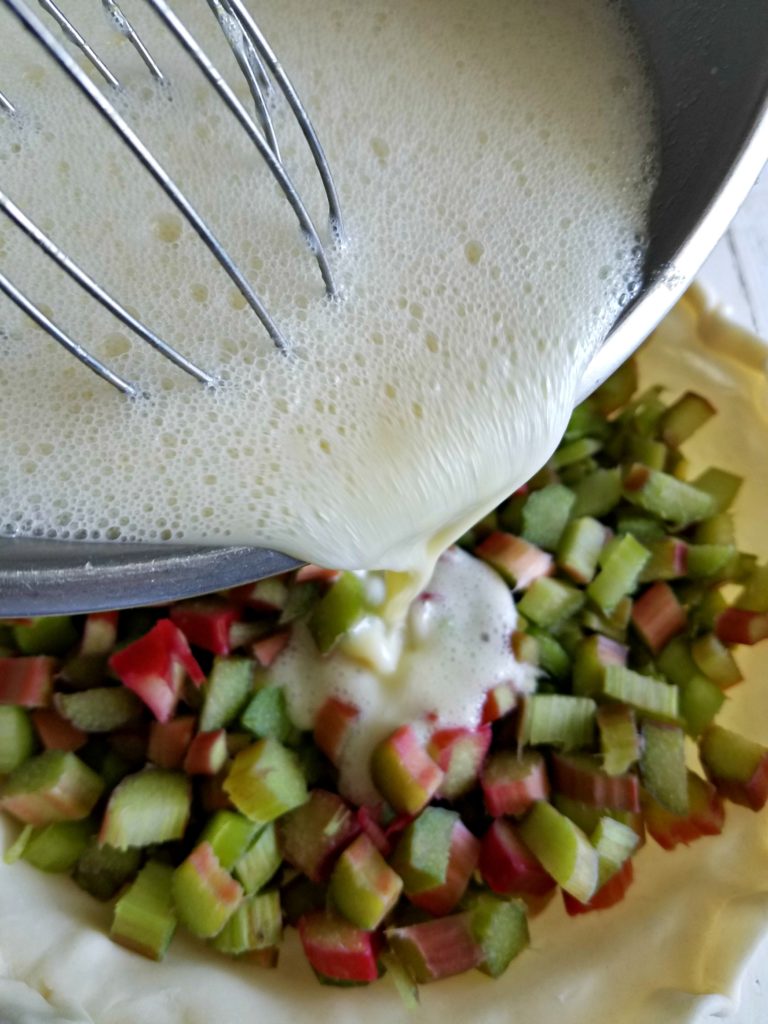
The pie looked beautiful when I put it in the oven…
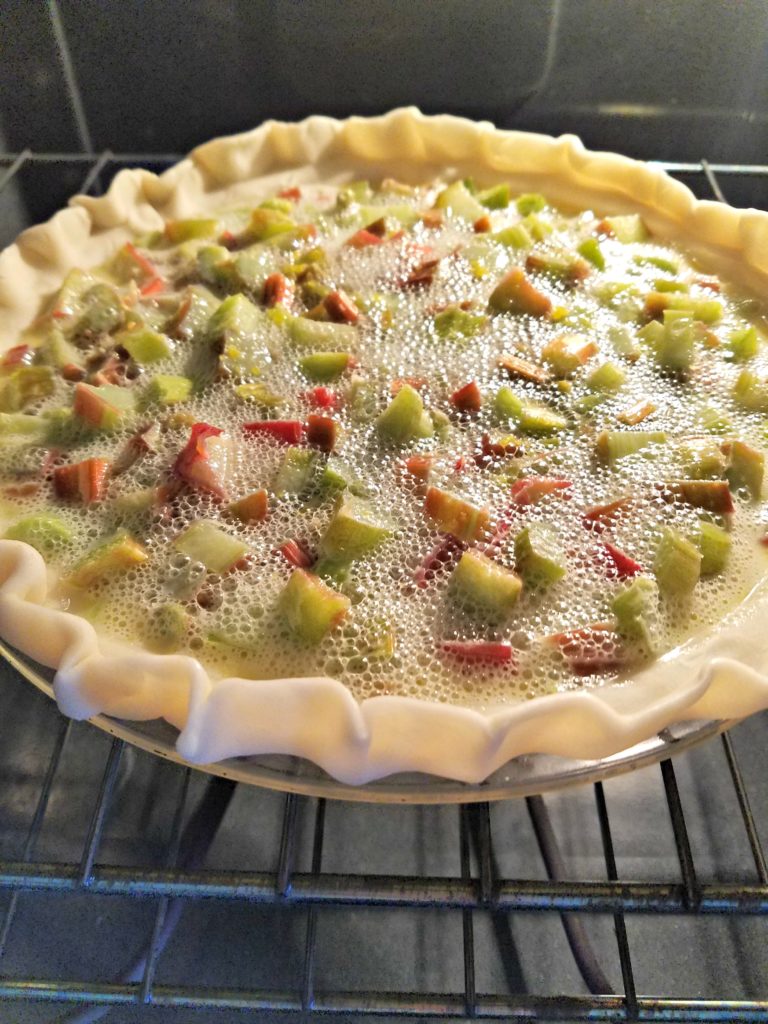
But for some reason, the crimped edge on my pie crust collapsed during the baking process. (For those of you who think this old Meemaw never has a cooking disaster…think again…and keep reading!)
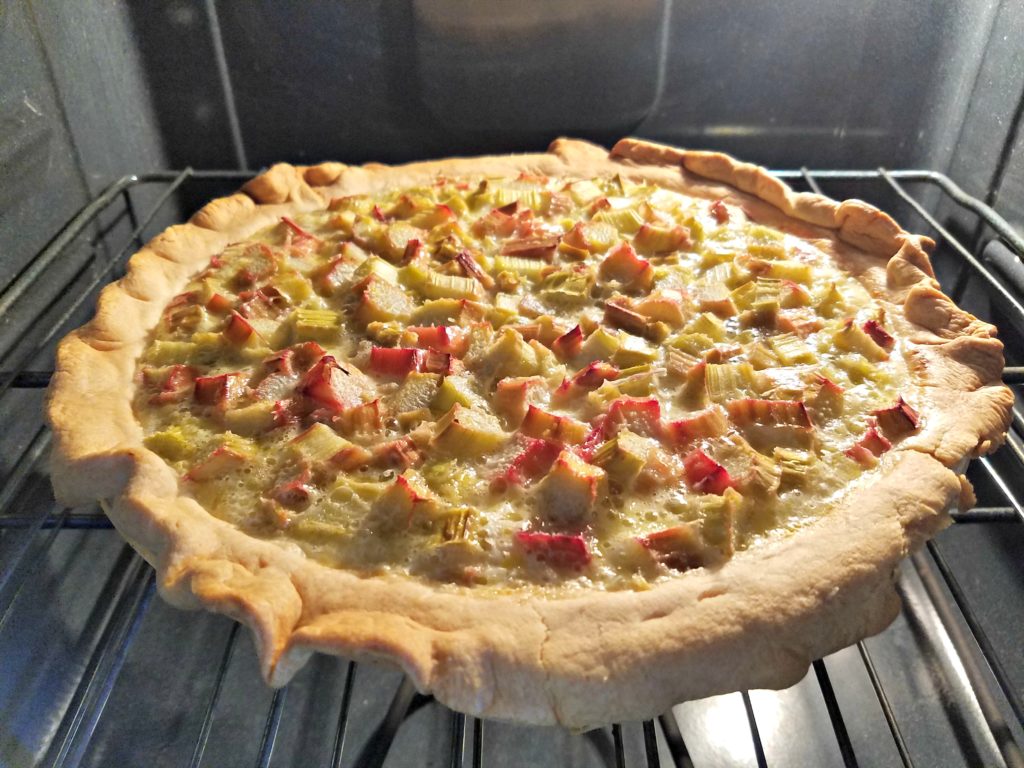
I should have refrigerated the unbaked crust for thirty minutes after my “photo shoot” to chill it again before baking, since a warm crust will slip and slide in the pie pan before it begins to firm up. That was my FIRST mistake.
Then I began to make the meringue to top the pie. I had returned the bowl of egg whites to the refrigerator while the pie baked, since the egg whites and the glass bowl must be very cold to ensure success. (Never make meringue in a plastic bowl…another no-no!) I began to whip the egg whites and Cream of Tartar with my electric hand mixer (Sorry Susie…I used my mixer!) and I added the sugar slowly. And I beat. And beat. AND BEAT. And those egg whites would not hold the air I was whipping into them. And that’s when it hit me. I was trying to make meringue on a day when the temperature outside was almost 100 degrees…and the humidity stifling! That is an almost impossible task. I finally remembered my mom telling me to NEVER try to make a meringue-topped pie on a humid day. (Sorry Mom…Too late!)
Well…by now my sad looking pie was out of the oven and waiting for that topping. So I dumped on the deflated mixture and it was not a pretty sight.
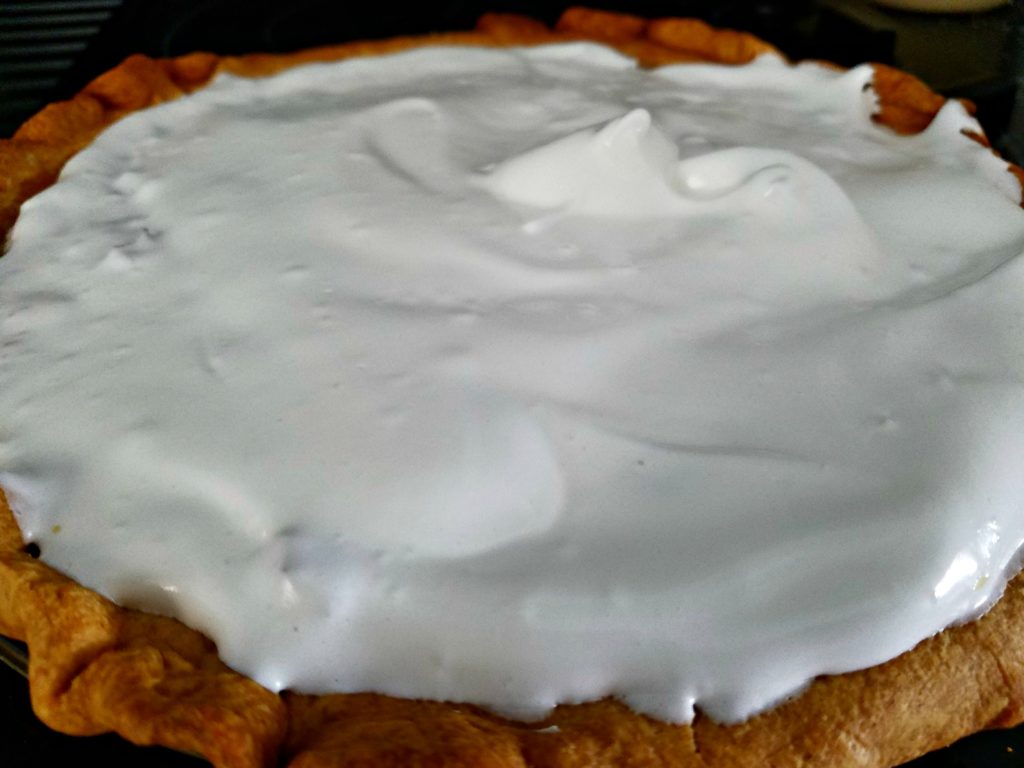
I quickly grabbed two more eggs from the refrigerator, and I separated the whites into a clean bowl…and made a second batch of meringue…just to try to make the topping thicker. (On a cool Autumn day, four egg whites would make a mountain of meringue!)
I piled on the pathetic second layer and threw the pie back in the oven…and I prayed for any kind of success since our company was on their way!
So here it is…the result of Meemaw’s lesson on How NOT To Bake A Pie…
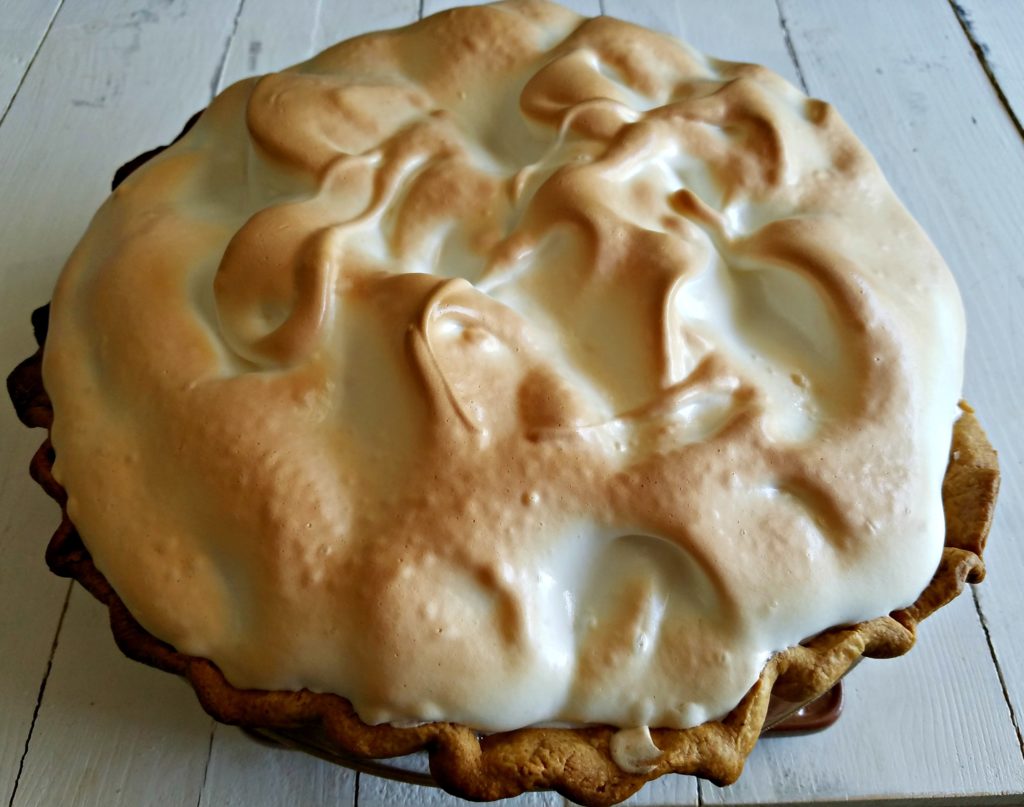
But after all the trials and tribulation…I must admit this Rhubarb Cream Pie turned out to be delicious.
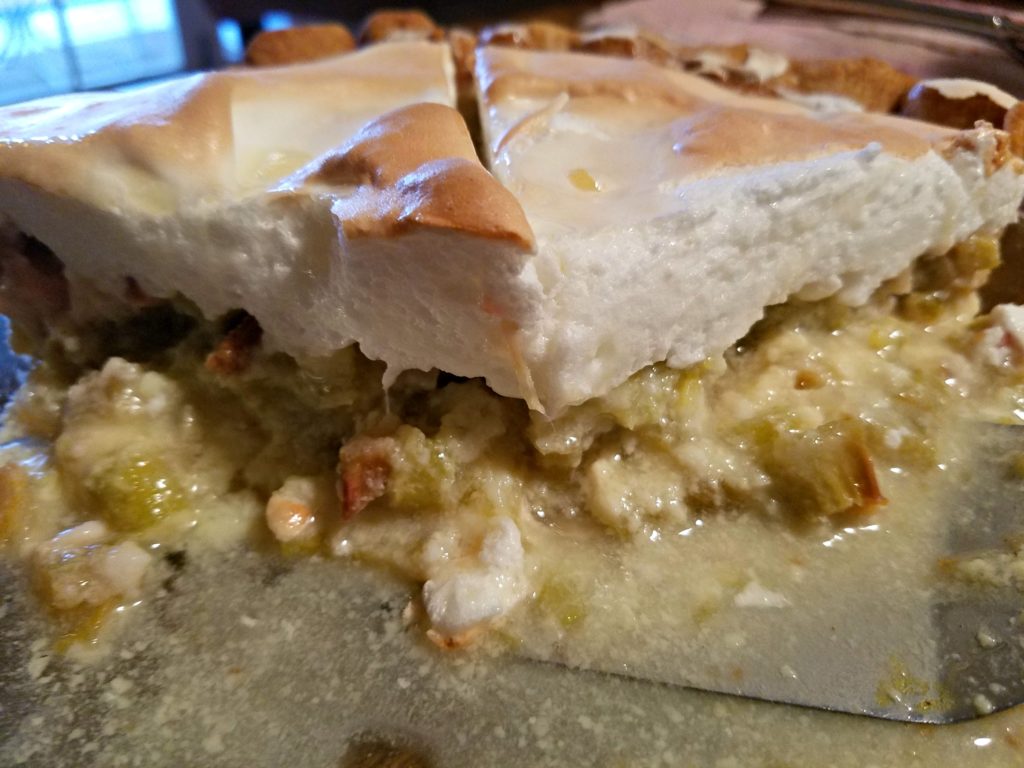
That pencil-written recipe brought back my wonderful memories of two unmarried Amish sisters who helped to shape the lives of so many “English” children in our small town so many years ago.
And suddenly my meringue mayhem didn’t seem to matter anymore.


- FOR PIE
- 1 Tblsp. flour
- 1 C. sugar
- 1 C. Half & Half (Or use 1/2 C. heavy whipping cream and 1/2 C. water)
- Yolks of 2 eggs (save whites to make meringue)
- 1 9 inch pie crust
- 3 C. uncooked rhubarb
- FOR MERINGUE
- 2 egg whites
- 1/2 tsp Cream of Tartar
- 1/2 C. sugar
- 1/2 tsp vanilla (optional)
- Preheat oven to 350 degrees
- Line 9 in. pie pan with crust
- Chop rhubarb into small pieces and place in pie crust
- Mix together the sugar and egg yolks.
- Add the flour and the Half & Half
- Mix well and pour over rhubarb
- Bake at 350 degrees for 50-60 minutes or until center of pie is set
- MERINGUE
- Beat cold egg whites until foamy in a glass or metal bowl
- Add the cream of tarter
- Slowly add the sugar while beating on high speed
- Add the vanilla (optional)
- Beat until stiff peaks form
- Pile on hot baked pie and return to oven for 10-15 minutes.
- Watch carefully so meringue doesn't burn
- When finished, place under broiler for a minute if darker meringue is desired. Watch Carefully!!!
- Do NOT attempt to make meringue on a hot and humid day. Make sure your mixing bowl and utensils are completely grease-free and clean. Make sure egg whites and bowl are very cold. Do not use a plastic mixing bowl. Add sugar very slowly while beating at high speed.

It looks so wonderful but I doubt I will try it– I would make a mess- but I loved reading about your success!!
Thanks Linda! Don’t be afraid to try it…the taste is worth the effort, even if you mess it up! 🙂
Patty, cannot wait to try this very simply sounding recipe, I will let you know if it works out, though I have not made meringue before, but will try.
Thanks Candy! Just follow my suggestions for the meringue and let me know how it turns out! 🙂
I am going to try this but not the topping I am going to do Whipped cream
Hi Doris!
That’s the beauty of recipes…They are only a guideline. I always “tweak” them and make them my own. Let me know how you like it with whipped cream!
Meemaw
You might be interested in Monroe Baron Strause’ rhubarb pie recipe in his book Pie Marches On. He used a double crust on his pie. However, before baking, he cut the rhubarb into 3/4-inch long pieces, put them in a colander and covered the rhubarb with sugar, letting the rhubarb sit for no longer than 2 or 3 hours. The colander sat in a bowl to catch the juices to be used in the recipe. There was then less of a need for flour or cornstarch thickeners which would affect the pie’s palatability. His recipe is on page 155 of his book which can be viewed for free at babel.hathitrust.org. He was affectionately known as “The Pie King” and traveled the country teaching chefs and bakers about avoiding the pitfalls of pie making. He also discovered that tapioca starch could be used in meringues in small amounts to remove excess moisture.
Thank you so much for your comments and for your baking suggestions! I will check out “The Pie King” the next time I get a hankering for PIE! My mother was an amazing pie baker when I was growing up. In fact after she died our whole family had a hard time looking at a certain spot on the kitchen counter…we still caught ourselves looking for a pie there. Food memories are so precious…
XOXO
Meemaw
I’m so glad you liked my recipe..and I love sharing stories about my Amish memories growing up in the Kalona community.
Enjoy!
Meemaw